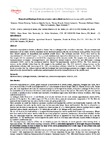Please use this identifier to cite or link to this item:
http://www.alice.cnptia.embrapa.br/alice/handle/doc/1000387Full metadata record
| DC Field | Value | Language |
|---|---|---|
| dc.contributor.author | HORNUNG, P. S. | pt_BR |
| dc.contributor.author | GRANZA, A. G. | pt_BR |
| dc.contributor.author | LAZZAROTTO, S. R. da R. | pt_BR |
| dc.contributor.author | RIBANI, R. H. | pt_BR |
| dc.contributor.author | LAZZAROTTO, M. | pt_BR |
| dc.contributor.author | SCHNITZLER, E. | pt_BR |
| dc.date.accessioned | 2014-11-18T11:11:11Z | pt_BR |
| dc.date.available | 2014-11-18T11:11:11Z | pt_BR |
| dc.date.created | 2014-11-18 | pt_BR |
| dc.date.issued | 2014 | pt_BR |
| dc.identifier.citation | In: CONGRESSO BRASILEIRO DE ANÁLISE TÉRMICA E CALORIMETRIA, 9., 2014, Serra Negra. Trabalhos. [S.l.]: ABRATEC, 2014. | pt_BR |
| dc.identifier.uri | http://www.alice.cnptia.embrapa.br/alice/handle/doc/1000387 | pt_BR |
| dc.description | Araucaria angustifolia is known in Brazil as Paraná Pine is endangered due to reckless extraction. The preservation and maintenance of the culture could be stimulated by use derivative products like the starch from its seeds (pinhão). In this work were studied samples of unmodified and modified pinhão starch. The hydrogen peroxide (H2O2) were used in the concentrations 0.1, 0.2 and 0.3 mol.L-1 (a, b, c) and simultaneously exposed in ultraviolet rays (λ = 256 nm) for one hour. One sample (N) was maintained as received for comparisons of the analysis results. The samples were analyzed by the thermoanalytical techniques: thermogravimetry and differential thermal analysis (TG-DTA) and differential scanning calorimetry (DSC); and by the rheological analysis: Rapid Viscoamylographic Analysis (RVA). The TGA showed an increase on the stability values form the (N) sample to the modified ones. The DSC showed a strong decrease on the gelatinization enthalpy with increasing of the H2O2 concentrations solutions valued for the modified samples. The RVA results presented that the Setback reduced with the treatment that used hydrogen peroxide in a higher concentration. The obtained results showed that the modification method applied altered the thermal behavior of the pinhão starch. | pt_BR |
| dc.format | Disponibilizado online. | pt_BR |
| dc.language.iso | eng | eng |
| dc.rights | openAccess | eng |
| dc.subject | Amido modificado | pt_BR |
| dc.subject | Peróxido de hidrogênio | pt_BR |
| dc.subject | DSC | pt_BR |
| dc.subject | Ultraviolet rays | pt_BR |
| dc.title | Thermal and rheological behavior of native and modified starch Araucaria angustifolia (pinhão). | pt_BR |
| dc.type | Artigo em anais e proceedings | pt_BR |
| dc.date.updated | 2014-11-18T11:11:11Z | pt_BR |
| dc.subject.thesagro | Araucária Angustifólia | pt_BR |
| dc.subject.thesagro | Espécie Nativa | pt_BR |
| dc.subject.thesagro | Raio Ultravioleta | pt_BR |
| dc.subject.nalthesaurus | hydrogen peroxide | pt_BR |
| dc.subject.nalthesaurus | modified starch | pt_BR |
| dc.description.notes | CBRATEC. | pt_BR |
| dc.format.extent2 | 6 p. | pt_BR |
| riaa.ainfo.id | 1000387 | pt_BR |
| riaa.ainfo.lastupdate | 2014-11-18 | pt_BR |
| dc.contributor.institution | Polyanna Silveira Hornung, UFPR; Andressa Gabardo Granza, UEPG; Simone Rosa da Silveira Lazzarotto, UEPG; Rosemary Hoffmann Ribani, UFPR; MARCELO LAZZAROTTO, CNPF; Egon Schnitzler, UEPG. | pt_BR |
| Appears in Collections: | Artigo em anais de congresso (CNPF)  | |
Files in This Item:
| File | Description | Size | Format | |
|---|---|---|---|---|
| 2014MarceloLCBATCThermalRheological.pdf | 536.43 kB | Adobe PDF |  View/Open |









